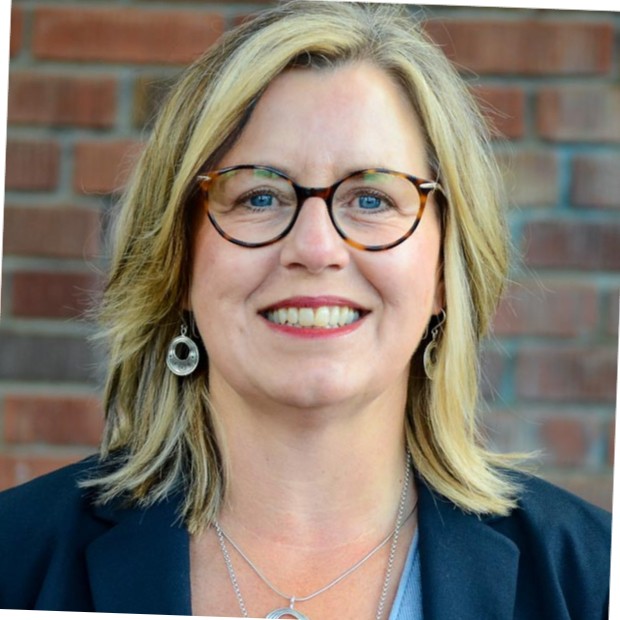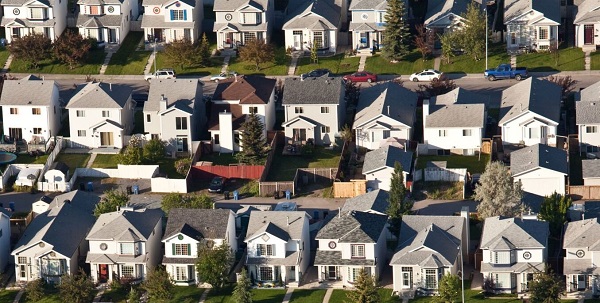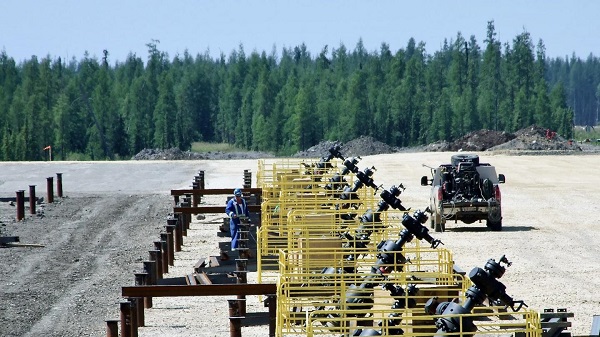Alberta
Beaver First Nation Harnesses Solar Power

Beaver First Nation has partnered with the Alberta government to install solar panel systems on a number of community buildings to help cut their power bills.

Minister Feehan, Chief Trevor Mercredi and Peace River MLA Debbie Jabbour and councilors in front of Beaver First Nation’s Administration office with new solar panels on roof.
Minister Feehan, Chief Trevor Mercredi and Peace River MLA Debbie Jabbour and councilors in front of Beaver First Nation’s Administration office with new solar panels on roof.
The project will also reduce greenhouse gas emissions and create local jobs. With support from Alberta’s Indigenous Solar Program, Beaver First Nation has installed solar panels on their band office, daycare, two fire halls, community centre and carpentry shop.
Funds saved from reduced utility costs – approximately $6,500 per year – will allow Beaver First Nation to reinvest in other community priorities. The solar panels are expected to generate 50.57 kilowatt hours per year. They will also prevent about 800 tonnes of greenhouse gases from entering the atmosphere, which is the equivalent of taking 170 cars off the road.
“Beaver First Nation is taking action to combat the effects of climate change and make a better life for future generations. We are proud to support them in their efforts and their environmental leadership.” Richard Feehan, Minister of Indigenous Relations
“It was important to Beaver because of the impact it would have on our energy bills and also we wanted to prove that solar power can work here in northern Alberta. We are big advocates of green energy and are very proud to participate in the Indigenous Climate Leadership Initiative with the province and we hope to see more projects like this in the future.” Chief Trevor Mercredi, Beaver First Nation
The $153,718 grant is part of $35 million in funding available in 2017-18 for Indigenous climate leadership programs that help Indigenous communities respond to climate change and provide greater energy security. These initiatives support the Alberta government’s commitment to implement the principles of the United Nations Declaration on the Rights of Indigenous Peoples.
Beaver First Nation is governed by a Chief and Council, and controls two reserves northwest of Fort Vermillion: Boyer 164 and Child Lake 164A. Party to Treaty 8 and a member of the North Peace Tribal Council, BFN has a registered population of 1074, over half of whom live off-reserve. The Nation’s traditional and consultative territory exists beyond the boundaries of northern Alberta, while the Beaver language is shared by other nations farther up the Peace River.
Alberta
Premier Smith moves to protect Alberta in International Agreements

Protecting Alberta’s jurisdiction
The International Agreements Act ensures Alberta’s jurisdiction is protected and decisions that shape our future are made right here at home.
This legislation draws a clear line: international agreements that touch on provincial areas of jurisdiction must be debated and passed into law in Alberta.
Alberta, not Ottawa, will decide how international agreements that affect provincial matters apply in the province.
“As we return to the legislature, our government is focused on delivering on the mandate Albertans gave us in 2023 to stand up for this province, protect our freedoms and chart our path forward. We will defend our constitutional rights, protect our province’s interests and make sure decisions that affect Albertans are made by Albertans. The federal government stands at a crossroads. Work with us, and we’ll get things done. Overstep, and Alberta will stand its ground.”
While the federal government has the power to enter into international agreements on behalf of Canada, it does not have the legal authority to impose its terms on provinces. The International Agreements Act reinforces that principle, ensuring Alberta is not bound by obligations negotiated in Ottawa that do not align with provincial priorities.
Bill 1 was introduced by Premier Danielle Smith following the fall 2025 speech from the throne as part of Alberta’s commitment to defend its sovereignty within a united Canada.
Key facts
- If passed, the International Agreements Act will replace the International Trade and Investment Agreements Act.
- The new legislation would expand its scope beyond trade and investment to include all areas of provincial jurisdiction.
- Currently, there is no formal agreement or requirement for the federal government to consult provinces when negotiating international treaties.
- Quebec’s Act respecting the exercise of the fundamental rights and prerogatives of the Québec people and the Québec State came into force in 2000.
- International agreements do not apply in Quebec unless approved by the national assembly or the provincial government.
- Quebec must give clear consent before any international agreement takes effect.
Related information
Agriculture
From Underdog to Top Broodmare

WATCH From Underdog to Top Broodmare (video)
Executive Producers Jeff Robillard (Horse Racing Alberta) and Mike Little (Shinelight Entertainment)
What began as an underdog story became a legacy of excellence. Crackers Hot Shot didn’t just race — she paved the way for future generations, and in doing so became one of the most influential producers the province has known.
The extraordinary journey of Crackers Hot Shot — once overlooked, now revered — stands as one of Alberta’s finest success stories in harness racing and breeding.
Born in humble circumstances and initially considered rough around the edges, Crackers Hot Shot overcame long odds to carve out a career that would forever impact the province’s racing industry. From a “wild, unhandled filly” to Alberta’s “Horse of the Year” in 2013, to producing foals who carry her spirit and fortitude into future generations.
Her influence ripples through Alberta’s racing and breeding landscape: from how young stock are prepared, to the aspirations of local breeders who now look to “the mare that did it” as proof that world-class talent can emerge from Alberta’s paddocks.
“Crackers Hot Shot, she had a tough start. She wasn’t much to look at when we first got her” — Rod Starkewski
“Crackers Hot Shot was left on her own – Carl Archibald heard us talking, he said ‘I’ll go get her – I live by there’. I think it took him 3 days to dig her out of the snow. She was completely wild – then we just started working on her. She really needed some humans to work with her – and get to know that people are not scary.” — Jackie Starkewski
“Crackers Hot Shot would be one of the top broodmares in Albeta percentage wise if nothing else. Her foals hit the track – they’re looking for the winners circle every time.” — Connie Kolthammer
Visit thehorses.com to learn more about Alberta’s Horse Racing industry.
-

 Agriculture1 day ago
Agriculture1 day agoFrom Underdog to Top Broodmare
-

 Carbon Tax2 days ago
Carbon Tax2 days agoBack Door Carbon Tax: Goal Of Climate Lawfare Movement To Drive Up Price Of Energy
-

 City of Red Deer1 day ago
City of Red Deer1 day agoCindy Jefferies is Mayor. Tristin Brisbois, Cassandra Curtis, Jaelene Tweedle, and Adam Goodwin new Councillors – 2025 Red Deer General Election Results
-

 Alberta2 days ago
Alberta2 days agoCalgary’s High Property Taxes Run Counter to the ‘Alberta Advantage’
-

 Bruce Dowbiggin1 day ago
Bruce Dowbiggin1 day agoIs The Latest Tiger Woods’ Injury Also A Death Knell For PGA Champions Golf?
-

 Alberta1 day ago
Alberta1 day agoAlberta’s licence plate vote is down to four
-

 Health1 day ago
Health1 day agoSovereignty at Stake: Why Parliament Must Review Treaties Before They’re Signed
-

 Digital ID2 days ago
Digital ID2 days agoThousands protest UK government’s plans to introduce mandatory digital IDs






